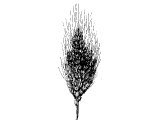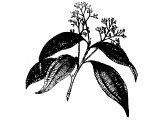Submitted by Alliemae
And so we begin at the beginning...
WHEAT

Before the sophistication of Rome, wheat, for the Romans, as for the Greeks before them, was a major factor not only in feeding the citizenry but in the development and shaping of administrative, economic and international policies. It affected not only territorial border relationships but progressed to a seafaring economy as well.
A diet of grains, although sustaining, can become tedious. At first Rome depended on the spice routes of the Arab traders; however, by the beginning of the first century C.E. Rome was building its own ships which were large and safe enough to sail via the Egyptian Red Sea to India for their spices. It was a long, hard trip and the spices were costly but they brightened up the former grain-predominated Roman diet, at least for those who could afford them.
To give us a physical orientation to the world of major food influences during the first century C.E. there was Rome, the Empire, which in the west began in the European area of Gaul, easterly through Anatolia and Armenia, including the Black Sea area just south of the Caucasus, then over through Central Asia, through Parthia and Kashan which are in the area of the Caspian Sea and Afghanistan, just to mention some of the more well known areas, and then onto the third major area which was China, both Eastern and Western.
The Spice Route by sea followed the Silk road on land and by sea the entire process of foods acquisition became more efficient as many of the products used in the early Roman diet came from all of the above-mentioned territories and became especially dispersed along the coasts: pork products, wheat, oils, fish and pickles from the ports of Gaul, olives from Crete, almonds and fruits from the ports bordering Anatolia, asafoetida and butter from Central Asia and India with spices all along the route but especially from India and China--China also being where supplies of rice and millet as well as wheat were in abundance. Soy beans also came from China and cinnamon, mace, nutmeg and cloves from the Indochinese Archipelago.

No discussion of Roman flavorings can be complete without their famous 'liquamen' (or garum), a fermented salted fish (anchovies were the favorite) which was, after being mixed together and left overnight, then placed in the sunshine in earthenware crocks for two or three months. Some people added old wine to the mix. The entire mix was thoroughly stirred off and on during the fermentation process which resulted in a clear golden fluid which meant it was ready for use. We now see this same type of fish sauce in many Asian cuisines as well as a similar type of fermented, salted and buried product of vegetables and/or fish (dried anchovies) or seafood in Korean Kimchis. The Koreans add very hot red pepper to their mix; I'm not sure the Romans did--I think not, according to the notes I've read on liquamen.
This has just been a brief history of very basic Roman foodstuffs. All of us, I believe, in our earlier classes have studied the basics of the Roman daily diet so I won't go into those details at this time.
I do want to mention this: for an Empire that lasted approximately 7 Centuries**, and which started the day with bread and water, eating only one major, large meal a day as compared with the West's (especially the United States) insistence on starting the day with a hearty breakfast--the need for three (3) balanced means a day--the masses of vitamins ingested--the myriad of diets stating that the only way to stay healthy and fit is to measure food or forget the 3 meals a day and be better off with a specified amount of a variety of foods broken down into three light meals plus three smaller snacks a day--not to mention which is best: low-carb, low-fat, zoning, fat-burning pills, etc., the Romans certainly accomplished great things!
I wonder if we, in our day in the West, will be doing the same.
I also wonder if the company, conversation, leisurely pace of the meal and conviviality of the Romans' late afternoon main multi-course meal accompanied with wines and good fellowship might be a great part of the magnificence of the Roman contributions to our world.
*My source was Reay Tannahill, FOOD IN HISTORY, (Fourth Stein and Day PB Printing: 1984.)
** "How long did the Roman empire last...?"
This question can't be answered easily. for the definitions of 'Roman empire' can vary. Generally speaking Rome began in about 625 B.C. althought the Romans believed their city dated back to 753 BC. But in the beginning it was only a town, hardly an empire. They controlled Italy by about 260 BC. This could be argued as being a small empire. Yet others would say it was far from it. Only by the end of its first war against Carthage did Rome actually possess any provinces (Sardinia, Corsica and Sicily) - 241 BC. The earliest point at which everyone would agree on the romans possessing an empire would be after their victory in the second Punic war in 201 BC. As for the fall, the date traditionally used for this is the ousting of the last emperor, Romulus Augustus, in AD 476."
SOURCE: ROMAN EMPIRE